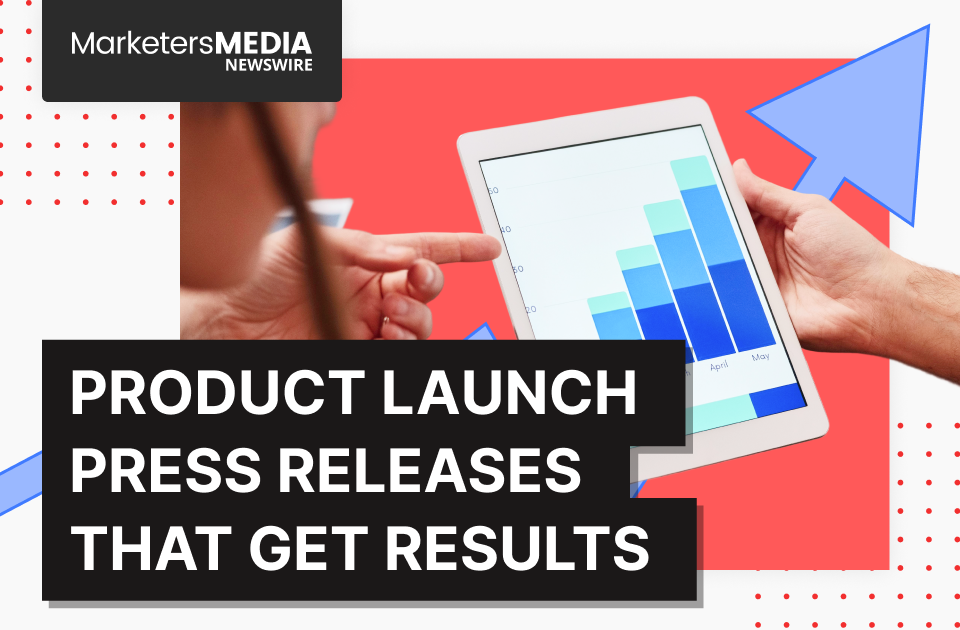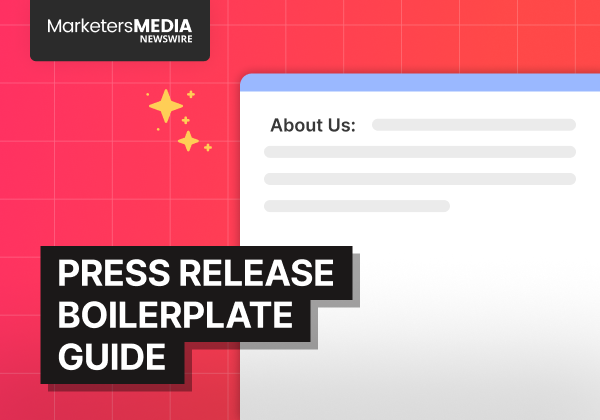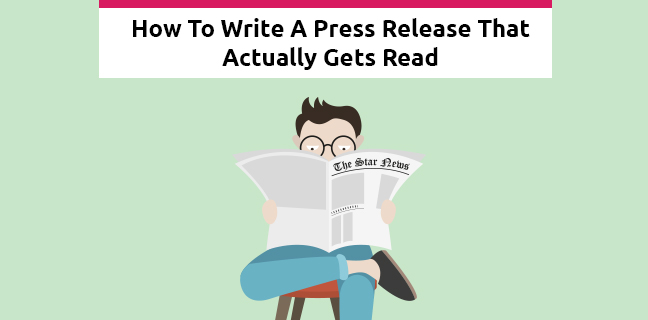Launching a new product is an exciting milestone, but getting the word out effectively is key to its success. A well-written press release can do just that, making an impression, informing the audience, and creating interest in what you’re bringing to the market.
In this guide, we’ll walk you through how to write a press release that hits all the right notes. Whether it’s for a sleek tech gadget or a new line of eco-friendly products, these tips will help you get noticed and tell your story in a way that resonates.
Understanding the Purpose of a Product Launch Press Release
A product launch press release is more than just an announcement. It’s a tool to spark curiosity and provide key details about your new offering. At its core, it answers essential questions:
What’s the product?
Who is it for?
Why should people care?
Beyond that, it’s a bridge between your business and the media. Journalists rely on press releases for story ideas, so crafting one that’s clear and newsworthy can make all the difference in gaining coverage.
Think of your press release as a way to create a first impression. By highlighting what makes your product stand out and why it matters, you set the stage for a successful launch.
The Building Blocks of a Product Launch Press Release (With Pro Tips!)
Every strong press release follows a proven structure. By including the right elements, you ensure your announcement is professional, engaging, and easy for journalists to use. Here’s a closer look at each component, with examples to guide you:
1. Headline
The headline is the first thing readers see, and it can make or break your press release. A great headline grabs attention, sparks interest, and encourages the audience to read further. Think of it as your press release’s elevator pitch—short, impactful, and to the point.
Here are some essential tips for crafting an effective headline:
- Be Concise and Direct:
Keep your headline short—ideally 80-90 characters or no more than 10 words. Readers should immediately understand the main point without needing to decipher complex phrasing. - Use Simple but Strong Language:
Avoid jargon or unnecessarily big words. Focus on clear, easy-to-read language that conveys your message quickly. For instance:- Clunky: “There are more trucks on the road, and less-qualified drivers, says local lawyer.”
- Clear: “Omaha Lawyer Warns Drivers About Truck Crash Risks and Premium Hikes.”
- Highlight What Matters:
Frame your news in a way that makes it relevant to your audience. Instead of just stating the facts, focus on how it impacts them.- Example: “EcoBags Expands to Michigan with Sustainable Shopping Solutions.”
- Example: “EcoBags Expands to Michigan with Sustainable Shopping Solutions.”
- Evoke Emotion or Curiosity:
A great headline should spark curiosity or evoke an emotional response. Tease just enough to intrigue readers without giving everything away.- Emotional: “Bullies Don’t Rule! Donating Anti-Bullying Books to Barnados Charity.”
- Curiosity: Instead of “There are more trucks on the road, and less-qualified drivers,” try: “Why Truck Safety Concerns Are Rising Across the Midwest.”
- Focus on Benefits, Not Just Features:
Highlight the impact or value your announcement provides.- Example: “Seattle Startup Combats Food Waste with a Simple, Safe Sticker.”
- Example: “Seattle Startup Combats Food Waste with a Simple, Safe Sticker.”
- Tailor Your Headline to Your Audience:
Speak directly to the people you want to reach. A headline targeting busy parents might emphasize time-saving benefits, while one for investors could highlight market potential.- For Parents: “New App Helps Parents Reclaim 2 Hours Every Day.”
- For Investors: “Startup Disrupts $50 Billion Childcare Market with AI-Powered App.”
| Extra Tips for Perfecting Your Headline: 1. Use Numbers and Statistics: Numbers add credibility and make your headline more concrete. Example: “Company Expands Operations by Opening 50 New Locations.” Example: “New Product Boosts Growth by 25% in Q2.” 2. Stick to Active Voice: Headlines written in active voice feel more engaging and direct. Active: “Startup Tackles Plastic Waste with Biodegradable Packaging.” Passive: “Biodegradable Packaging Launched by Startup to Tackle Plastic Waste.” 3. Avoid Casual or Blog-Style Language: Keep it professional. Instead of: “Guess Who Just Opened 10 New Stores!” Use: “Company X Opens 10 New Locations Across the U.S.” 4. Avoid Hyperbole and Sensationalism: Words like “groundbreaking” or “revolutionary” can make your press release sound like a sales pitch. Let the facts speak for themselves. |
By following these tips, you’ll craft headlines that not only grab attention but also communicate value and relevance to your audience. Here is an example:
2. Subheadline/Summary
The subheadline or summary is a key opportunity to add depth to your headline. It provides additional context and highlights specific benefits, helping readers quickly understand why the product is worth their attention. A well-crafted subheadline complements the headline without repeating it and can emphasize unique features or appeal to a specific audience.
Example of a Subheadline (Nightlight):
“Created with parents in mind, this customizable nightlight uses soothing colors and gentle brightness settings to support better sleep for young children and reduce nighttime disruptions.”
Example of a Summary (Coffee Pods):
“Made entirely from recyclable materials, these coffee pods offer an eco-friendly way for sustainability-conscious coffee lovers to enjoy their favorite brews, while eliminating single-use plastic waste.”
| Tips for Crafting an Effective Subheadline or Summary: 1. Highlight Unique Benefits: Focus on what sets your product apart. For instance, does it solve a common problem, offer a new feature, or appeal to a niche audience? Example: “Engineered for urban cyclists, the compact helmet combines lightweight durability with advanced impact protection.” 2. Focus on the Target Audience: Speak directly to the audience you’re trying to reach. This makes your summary more relatable and engaging. Example: “Perfect for busy professionals, the app simplifies time management with AI-driven scheduling tools.” 3. Keep It Concise, but Informative: Use simple, direct language to add value without overloading with unnecessary details. Aim for one or two sentences that complement the headline. Example: “Designed for frequent travelers, the carry-on suitcase features expandable compartments and a built-in USB charging port for ultimate convenience.” |
3. Dateline
The dateline is a critical part of your press release, specifying the release date and location of your announcement. It grounds your news in a specific time and place, giving it context and immediacy for readers.
A clearly stated dateline ensures journalists and readers instantly know when and where the news originates, which is especially important for creating a sense of relevance and timeliness.
For example, a dateline reading “[San Francisco, CA], January 22, 2025” lets the audience know the announcement is current and tied to a specific location, which can be crucial for regional relevance or local media coverage.
This may seem like a small detail but it can have a big impact on how your press release is perceived.
4. Lead Paragraph
The lead paragraph is arguably the most important part of your press release. It sets the tone for the rest of the content and ensures your audience quickly understands the core message. In just a few sentences, it answers the critical questions: what, who, when, where, and why.
This section acts as the hook, drawing in journalists, bloggers, or potential customers who are scanning for newsworthy information. A well-crafted lead paragraph captures their attention, delivers the most important details upfront, and encourages them to keep reading.
Why It’s Important:
- Journalists Are Busy: Reporters and editors often receive hundreds of press releases daily. If your lead paragraph doesn’t immediately communicate the key points, they’re likely to move on to the next release.
- First Impressions Matter: The lead paragraph sets the stage for the rest of the press release. A strong opening ensures your announcement comes across as professional, clear, and worth covering.
- Context Is Key: By providing all essential details upfront, you make it easier for journalists to quickly understand your story and decide how it fits into their coverage.
Example:
"BrightKidz, a leading innovator in home technology, today announced the launch of its Smart Nightlight, designed to help children fall asleep faster and stay asleep longer. Available starting February 1, the device integrates sleep tracking and customizable light settings to create the perfect bedtime environment."
This example highlights the what (Smart Nightlight launch), who (BrightKidz), when (available February 1), where (not explicitly stated but implied as a global launch), and why (helps children sleep better). By packing these details into a concise paragraph, the reader gets a full picture of the announcement without needing to dig deeper.
To craft a strong lead paragraph, focus on clarity, brevity, and relevance to your target audience. Avoid fluff and get straight to the point while maintaining a tone that aligns with your brand.
5. Body: Bring Your Product to Life
The body of your press release is where you expand on the details, turning facts into a story that captures the reader’s attention. Instead of listing features, focus on presenting the product in a relatable and informative way.
Here's how:
Start with the Problem: Frame the context by introducing the challenge or gap your product addresses. For example:
"For many commuters, finding a durable and compact bag that fits their daily needs has been a constant struggle. The new FlexPack was developed to provide a solution for those looking for both practicality and style in their day-to-day routines."
Describe the Experience: Go beyond surface-level descriptions and illustrate how the product fits into someone’s life. Use straightforward and clear language to explain the product’s impact.
"Imagine having one bag that adapts to your busy schedule—light enough for errands, yet sturdy enough for weekend getaways. The FlexPack is made from water-resistant materials and features expandable compartments for versatile use."
Benefits Before Features: Lead with what the product offers users, followed by the technical details. This ensures the audience understands its relevance before getting into specifics.
"The FlexPack’s modular design allows users to switch between compartments for different uses, making it an ideal choice for those juggling multiple activities. Its reinforced straps and lightweight frame make it comfortable to carry throughout the day."
Include the Backstory: Share how the product came to be, highlighting research, inspiration, or real-world testing. Keep the tone factual and focus on the process rather than making exaggerated claims.
"After receiving feedback from travelers and city dwellers, the team behind the FlexPack conducted extensive testing to ensure durability and functionality. Drawing on insights from frequent commuters, the design was refined to address common issues like weather resistance and compartment accessibility."
Detailed Example:
"The FlexPack is the result of years of careful development and collaboration. By combining input from focus groups with materials sourced for sustainability, the bag was designed to meet the needs of a wide range of users. Its expandable compartments make it adaptable for various purposes, while the water-resistant shell ensures it withstands unexpected weather conditions. The team’s goal was simple: to create a bag that simplifies daily life without compromising on quality or design."Through presenting your product as a solution to real-world challenges and sharing its story with clarity and purpose, you create a press release that resonates with readers and encourages meaningful engagement.
6. Quotes
Quotes bring personality, authenticity, and a human element to your press release. They give readers a glimpse into the thought process, values, and expertise behind the product. A well-crafted quote can convey excitement, highlight the product’s value, or add credibility by showcasing the team’s expertise or the company’s mission.
Here’s how quotes can be used effectively:
- To emphasize the product’s value:
Highlight how the product addresses a specific problem or need.- Example: “We designed the Smart Nightlight to address a real problem that parents face every night,” said Sarah Wong, CEO of BrightKidz. “Our goal was to create something that not only helps children sleep better but also gives parents peace of mind.”
- To showcase the team’s expertise or passion:
Use quotes to give insight into the research, dedication, or collaboration behind the product.- Example: “This product is the result of extensive testing and collaboration with sleep experts,” added James Lee, lead product designer. “Every feature was carefully designed to support healthier sleep habits for children.”
By including quotes from key figures, such as the CEO, product designers, or project leads, you can make your press release feel more personal and engaging while reinforcing your product’s importance and credibility. Remember, quotes should sound natural and conversational, not overly rehearsed or promotional. Here is an example:
7. Call to Action
A call to action (CTA) is a crucial element in your press release that directs readers on the next steps to take. Without a clear and actionable CTA, your audience may lose interest or fail to engage further, leaving your press release without the impact it deserves. A strong CTA increases the likelihood of your readers taking action, whether it’s visiting your website, attending an event, or contacting your team.
Examples of Clear CTAs:
- “Visit our website at brightkidz.com to learn more and order your Smart Nightlight today.”
- This example drives immediate action and directs readers to a specific destination (your website) where they can take the next step.
- “Join us for a live demo on February 1 to see the Smart Nightlight in action.”
- Inviting readers to a live demo creates an opportunity for engagement and allows them to experience the product firsthand, which can help build trust and credibility.
- “Contact our sales team at [email protected] for wholesale inquiries.”
- This encourages businesses or potential partners to reach out directly, fostering professional connections and opening up opportunities for collaboration.
Why is a CTA Important?
A well-crafted CTA ensures your press release is not just informative but also actionable. It bridges the gap between awareness and engagement, giving your audience a clear path to take interest in your product or announcement further.
Make it easy for them by providing a straightforward and compelling direction like this example below.
8. Boilerplate
The boilerplate is a short but essential paragraph about your company that appears at the end of your press release. It provides readers with context about who you are, what you do, and why your business matters. A well-written boilerplate helps establish credibility, gives journalists key information at a glance, and ensures your press releases maintain a consistent tone and message across all your communications.
This section should be factual, concise, and align with how your company is represented in other press materials. Avoid overloading it with unnecessary details or promotional language; instead, focus on the core aspects of your business that are most relevant to the announcement.
Example:
“BrightKidz is a San Francisco-based tech company dedicated to creating innovative solutions that make family life easier. Since 2010, we’ve developed award-winning products that blend functionality with modern design.”
By including a strong boilerplate, you make it easier for journalists, partners, or potential customers to understand your company at a glance, reinforcing your brand identity and professionalism.
9. Contact Information
Ensure journalists and potential partners can easily reach out for more information by including comprehensive contact details. This should include the name of your media contact, their job title, email address, and phone number. Adding a physical address is optional but can enhance credibility and add a touch of professionalism, especially when targeting traditional media outlets.
Providing clear and accurate contact information is crucial because it removes barriers for journalists or collaborators who may need to follow up quickly. Whether they’re seeking additional quotes, clarifications, or high-resolution visuals, having a direct line of communication ensures the process is seamless. This not only increases the likelihood of media coverage but also reflects positively on your organization’s professionalism and accessibility.
Additionally, making it easy to reach your team helps establish trust with reporters and demonstrates that your company is transparent and responsive—key traits that can lead to stronger relationships with the media.
By sticking to this structure, you’ll make your press release professional and easy to digest.
Incorporating Multimedia Elements
Visuals are essential for boosting engagement in your press release. High-quality images, videos, or infographics help your audience better understand and connect with your product, whether it’s the sleek design of a new gadget or the vibrant colors of a fresh clothing line. Adding multimedia elements makes your announcement more appealing and easier to share.
For journalists, professional visuals save time and effort, increasing the likelihood that your press release will be covered by media outlets. Incorporating multimedia is not just an add-on; it’s a critical element that elevates your announcement and makes it more engaging.
Examples of Effective Visuals:
- Tech: High-resolution images of the product in use, screenshots of the interface, or a video demo.
- Fashion: Styled product shots, behind-the-scenes footage of the design process.
- Food: Close-ups of dishes, preparation videos, or infographics on nutritional benefits.
Make sure your visuals are easy to access—embed links or provide a downloadable media kit.
Common Mistakes to Avoid
Even a great product can lose momentum with a poorly written press release. Here are 5 common mistakes and how to avoid them:
1. Being Too Promotional
Focus on facts and benefits rather than exaggerated claims. Journalists want news, not an ad.
- Promotional Example: “This is the best product ever, and no one should miss out on it!”
- Newsworthy Example: “The product introduces a first-of-its-kind feature that addresses a common customer pain point.”
2. Skipping the Essentials
Include all key elements—headline, lead paragraph, and contact details. Missing these makes your release look incomplete.
3. Overloading with Details
Keep your press release concise. Too much information can overwhelm your audience.
- Before: “The new vacuum cleaner has 15 advanced features, including a dual-motor system, self-cleaning filters, LED lights, a retractable cord, and more.”
- After: “The vacuum cleaner combines powerful suction with self-cleaning filters, making household cleaning quick and hassle-free.”
4. Forgetting to Proofread
Typos and errors can damage your credibility. Always double-check grammar and facts before sending.
5. Ignoring Distribution Strategy
Don’t just post and hope for the best. Plan your outreach and follow up with key contacts to ensure visibility.
Distributing the Press Release
A well-written press release won’t make an impact if no one sees it. Distribution is just as important as the writing itself.
Start by identifying your target audience. Are you reaching out to tech journalists, lifestyle bloggers, or trade publications? Tailor your distribution to those who are most likely to cover your product.
Ways to Distribute:
You can distribute your press release through several effective channels. Press release platforms like MarketersMEDIA Newswire help you reach hundreds of media outlets, streamlining the process.
For direct outreach, consider sending personalized emails to journalists or bloggers in your industry. Highlight why your product would interest their readers, such as emphasizing AI features for tech journalists with a detailed spec sheet or offering lifestyle bloggers a sample to showcase how your product integrates into daily life.
Additionally, share your press release on social media platforms like LinkedIn, Twitter, or Instagram to engage your followers and encourage sharing. Finally, publish the release in your company’s newsroom or blog section to ensure it’s easily accessible to potential collaborators and site visitors.
Consistency is key. Follow up with contacts and monitor coverage to see where your release gets picked up.
Ready to Introduce Your New Product?
Writing a great product launch press release takes time and attention to detail, but the payoff is worth it. By following these steps—structuring your release effectively, adding engaging visuals, and targeting the right audience—you’ll set the stage for a successful launch. If you'd like, you can also use this press release template to make the process even smoother.
Now it’s your turn to write a press release that captivates journalists and potential customers alike. Start drafting today and watch your product take center stage.
Free Press Release Template
Tell us where to send your PDF:









